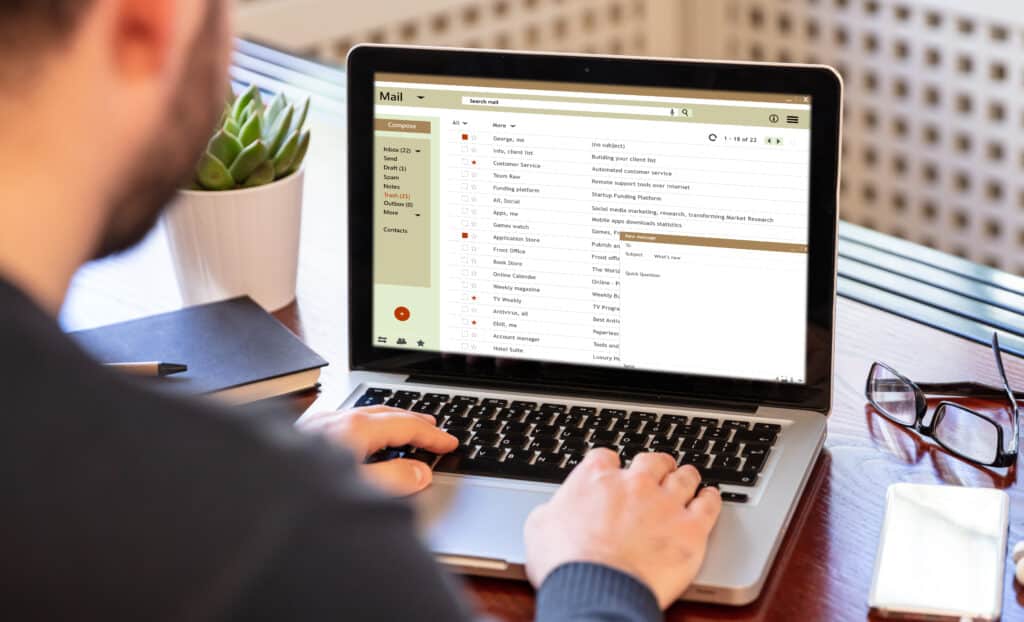Sending emails can be a chore, especially if you’re not getting the results you’re hoping for. You may wonder if the investment is worth the effort.
The answer is yes! Email marketing is one of the most effective ways to reach new and current clients. Experts estimate that for every dollar you invest in email, you’ll average a return of 36 dollars. That’s a far higher ROI than you’ll get from other marketing tools.
To get results, you need to implement effective email marketing techniques. Your clients expect content that’s relevant, personal, and helpful. Your emails should be respectful, well-planned, personalized, well-designed, and actionable so your clients enjoy reading them and you enjoy the profits.
Here are five email best practices for advisors:
1) Mind Your Manners
Clients want to know you care about their needs and wants. To avoid crossing a line, it’s important to respect boundaries. Don’t purchase contact lists as you build your contacts; instead, add people who have interacted with your business. Follow CAN-SPAM rules. Fill your email with useful content, not just sales pitches. Avoiding the appearance of spam will help keep you out of spam filters. Make sure you always give your clients the option to unsubscribe.
On the other hand, don’t assume frequent emails bother clients. According to one survey, over 60% of respondents enjoyed receiving promotional emails every week, and many would prefer to receive more. Clients who subscribe to your email list expect you to email them. So why not honor the implied contract?
2) Engage More Clients with Well-Timed Content
Planning your emails makes it easier for you to create and deliver content that takes advantage of time-sensitive opportunities. Advance planning with a calendar or spreadsheet is recommended. You can include regular features and adjust the content for the appropriate season or audience. A few ideas:
- Upcoming events
- Interviews with advisors and financial experts
- Market news
- Promotions and products
- Blog posts
- Tips and how-tos for key financial goals
- Webinar or conference recaps
- Regulatory information
- Firm information
- Holidays
3) Follow the Numbers and Plan for Success
To keep your clients engaged, deliver the right content at the right time. Personalizing emails with your clients’ names is a simple step, but if you want to provide custom-made content for your clients, automation is essential. And automation saves you time! Automation allows you to set behavior rules that will trigger emails based on clients’ behavior. For example, you could set a rule that automatically sends a series of welcome emails when a client subscribes to your email list.
Segmenting your client lists can help you personalize your content to your clients even further. You can create groups within your contacts based on your clients’ ages, interests, careers, income, or any other categories you prefer. Then you can target certain groups and create drip campaigns with content uniquely suited to their needs.
4) Carefully Craft Your Layout and Subject Lines
With all the email templates on the market, there’s no excuse for bad graphic design. Your email layout should be easy to follow, consistently branded, and structured to highlight your most important content. Docupace’s PreciseFP, for example, is a comprehensive template library that provides customizable email design and content to suit your firm’s needs.
The presentation of your text is also vital to visual interest. To facilitate online reading, include headings to break up long blocks of text, put essential information at the beginning, and use bullet points rather than long paragraphs.
To increase the odds of your emails getting opened, carefully consider subject lines. A/B tests of different subject lines can help you determine which subject lines are most effective.
5) Don’t Forget an Effective Call to Action
A call to action tells your client what you want them to do. Don’t overdo it, but be up-front about your request. Make it simple for clients to perform the action. Contact information and links should be easy to find and use.
Effective calls to action are easy, concise, and beneficial to clients. A few examples:
- Schedule a free 15-minute phone consultation today.
- Download our app to view your portfolio online.
- Join our free retirement planning webinar.
If you have effectively planned, automated, crafted, and concluded your content, a call to action helps you convert while you communicate. If you provide value to your clients through your emails, they’ll continue to engage with your firm.
Thinking about implementing an email marketing strategy to deliver timely and effective content to new and current clients?
Contact communications@docupace.com to find out how Docupace’s range of document management software integrates with your email platform to seamlessly harmonize with your client engagement plan.




